August 19, 2021
IGrain’s Rahul Chauhan provides information on pricing and current inventories, as well as import figures and news from domestic and international markets.


New crop arrival started in Karnataka. Maharashtra crop expected at anytime
Buying patterns of mung beans were sporadic during the past week, causing prices to improve slightly. In Delhi, there was a recorded price improvement of Rs. 100 per quintal due to the slight increase in buyer enquiries, meaning prices are now at Rs. 6,200/6,700 per quintal.
As of August 11, the sown area of mung beans was 32.52 lakh hectares, compared to 32.93 lakh hectares in the same period last year.
Maharashtra
The arrival of new mung beans has increased in some mandis of Maharashtra. At the beginning of the week, the arrival of new mung beans in the Ahmednagar mandi was 800/900 bags, which had increased to 3,000 bags by the weekend. Last week, the price of mung beans in Maharashtra rose by Rs. 100/200 per quintal due to increased demand. Latur traded at Rs. 6550, Barshi at Rs. 4500/6500, Jalgaon- Madhya Pradesh Line at Rs. 6,800, Lemon at Rs 5000/7300 and Ahmednagar New Mung at Rs 6000/7100 per quintal.
Karnataka
The arrival of supplies in the mandis of Karnataka is in full swing. The daily amount of new mung beans in the Gadag mandi is 4000/5000 bags, with 3000/3500 bags in Bagalkot and 2500/3000 bags in Yadgir, which is double that of the last two weekends. Due to the large amounts of supplies arriving, prices of new mung beans fell by Rs. 50/100 per quintal in Karnataka. The price in Gadag was Rs. 5732/7109, in Bagalkot Rs 6273/7159 and in Yadgir Rs 6101/6910 per quintal.
Rajasthan
Since demand remained at normal levels, prices did not see much difference: in Jaipur they remained stable at Rs. 6200/6600, in Merta at Rs.4500/6000 and in Kishangarh at Rs.3800/6000 per quintal.
Madhya Pradesh
Due to sluggish demand, prices in both Pipariya and Harda remained stable: Rs. 4400/5900 and Rs. 5300/6200 per quintal, respectively. Prices in Kareli, however, declined by Rs. 200 to Rs 4500/6050 per quintal.
Other
Due to the slight improvement in demand, prices in Lalitpur showed an increase of Rs. 150, trading at Rs. 5800/6250 per quintal. There was no change in Dahod, with prices remaining stable at Rs. 6000/6200 per quintal.
Mung dal
Due to slow demand, there was no movement in the prices of mung dal this week and Delhi prices remained stable at Rs. 8200/8700, Jalgaon at Rs. 8200 and Indore at Rs. 7200/8400 per quintal.

Strong buying of mung beans continues in Karnataka
Indore. Business is running at a normal pace in the pulses market and prices have started coming down. The arrival of new goods has begun to increase in Karnataka and Maharashtra. Traders and millers in Karnataka are showing interest in procuring mung beans and some supplies are also moving out of the state. Due to clear weather in Maharashtra, the pace of harvesting and preparation of mung beans has intensified. The government has increased the minimum support price from Rs. 7196 per quintal for the 2020-21 season to Rs. 7275 per quintal for the 2021-22 season but market price is running far below the support price. The average price of mung beans in the Indore mandi was recorded at Rs. 6200/6300 per quintal yesterday. In the coming days, new supplies of mung beans and urad may start arriving in some other states.
The estimated data released by the Union Agriculture Ministry for the production of pulses for the 2020-21 season does not match with the industry-trade sector estimates, meaning there is confusion in the market. The government has expressed the possibility of a huge increase in the production of gram, which could reach an all-time high of 1.2 million tonnes. The industry-trade sector, however, believes that the actual production has not exceeded 85-90 lakh tonnes.
Order issued to implement stock limit on pulses in Maharashtra
Mumbai. Under the directions of the Central Government, the Maharashtra Government has issued an order to impose stock limits on pulses. This formal order has already been issued in other states including Rajasthan, Uttar Pradesh, Madhya Pradesh and Gujarat. Under this order, the same stock limit of gram, masoor, tuar and urad has been implemented for wholesale traders, retailers, pulses, millers and processors, and is fixed by the central government. The wholesaler can stock a maximum of 500 tonnes of pulses at a time, out of which the stock of any one pulse should not exceed 200 tonnes. Retail traders will be allowed to stock up to 5 tonnes of pulses while pulse millers have been given the right to stock pulses equivalent to 50 per cent of the last six months' production or the annual accumulated processing capacity. Pulse importers have been exempted from this stock limit on a specific condition: the government notification states that if the importers declare their stock of pulses on the portal of the Department of Consumer Affairs then none of the provisions of this order will apply to the import of pulses and the importers will be exempted from the stock limit. According to the notification, the storage limit on pulses will be valid until October 31st 2021. The aforementioned legal entities (business firms and millers) will have to declare their pulses stocks on the portal of the Department of Consumer Affairs and, if the stock held by them is more than the prescribed limit, the additional stock will be declared within 30 days from the date of issue of notification.
The Central Government has decided to introduce stock limits in the domestic division with a view to increase the supply and availability of pulses as well as to check prices. This has led to some price decreases.
The prices of pulses are expected to improve due to festive demand
Mumbai. With the increase in the range of stock limits, pulse prices are showing signs of strengthening again. Pulses are stocked by some big trading firms and imports from abroad are expected to increase in the coming months.
The sowing area of urad and mung in the current kharif season has reached close to that of last year but is dependent on both weather and the monsoon season, which can affect the crop to a great extent. The sown area of tuar is up from last year and the condition of the crop is said to be normal now after some early losses in Maharashtra-Karnataka. If the weather is favorable in the coming period, production of Kharif pulses will be average. However, if there is excessive rain or drought the possibility of heavy damage to the crops will increase because the moong-urad plants are not very resistant.
MONSOON STATUS PER STATE
Andhra Pradesh Crop, Monsoon Status
• From June 1 to August 11, Andhra Pradesh recorded a 2% increase compared to average rainfall. Chittoor, Anantapur, YSR Kadapa also received more rain.
• East Godavari, West Godavari, Prakasam, Nellore and Kurnool recorded average rainfall (+19 to -19%) while Srikakulam, Visakhapatnam recorded reduced rainfall.
• It is clear from the above data that Kharif sowing in Andhra Pradesh has decreased compared to last year.
• Good rain was recorded in the initial phase but now the lack of rain is having an effect.
Telangana Crop, Monsoon Status
• Rainfall in Telangana was 26% above average in July and 51% above average in June (an increase of 45%). In August, however, rainfall was -83%, i.e., it did not rain at all.
• Heavy rainfall was recorded in 22 districts of Telangana, while rainfall was average in the other 11 districts. There was no less-than-average rainfall in any district.
• The government asked the farmers to reduce the sowing of maize in 2021.
• The sowing area of tuar has decreased by 2.3 lakh hectares from last year to 8.7 lakh hectares. Mung bean sowing has decreased by 20,000 hectares to 1.34 lakh hectares and urad sowing has reduced by 2,500 hectares to 41,719 hectares.
Orissa Crop, Monsoon Status
• The sowing area of rabi in Orissa was 41.87 lakh hectares, which is 5 lakh hectares less than last year.
• Sowing of mung was slightly decreased from last year to 1 lakh hectares, while tuar was at 1.12 lakh hectares.
• Rainfall in May was 201% above average but in June the rainfall decreased to 6.9% above average, 21.3% in July and 78% in August. Consequently, the crops are now in dire need of water.
Rajasthan Monsoon Special Report (Highest Kharif Mung producing state)
• Rainfall in 11 of the 33 districts of Rajasthan is below average and only 20% of the land in the state has irrigation systems, meaning 80% of the area is dependent on monsoons.
• Rainfall occurred in most parts of East Rajasthan at the end of July and in the first week of August but in some districts, rainfall was 40% below average.
• In the districts where there is no rain, both the upcoming Rabi crop and the Kharif may be affected.
• According to the Meteorological Department, there is a possibility of rain in East and West Rajasthan after August 20 however the Department also states that rainfall in the West may nevertheless remain below average.
• If there is good rain in East Rajasthan, floods may also occur.
• Kharif crops impacted: Jowar, Maize, Bajra, Soya, Urad, Moong.
• Between June 1 and August 16, 11 of the 33 districts recorded decreased rainfall, 14 districts recorded average rainfall and 4 districts recorded excessive rainfall.
• The Bharatpur division recorded the highest rainfall and Jodhpur the lowest.
June 1 to August 11
• Above average rainfall over Chandigarh, Delhi, East Rajasthan, West Madhya Pradesh, Gangetic areas of West Bengal, Telangana, Karnataka, North Karnataka, Konkan, Goa, Rayalaseema, Puducherry and Karaikal.
• Rain is normal in West Rajasthan, Punjab, Himachal Pradesh, Uttarakhand, West and East Uttar Pradesh, Bihar, Sikkim, Jharkhand, East Madhya Pradesh, Chhattisgarh, Vidarbha, Marathwada, Andhra Pradesh, South Karnataka and the Coastal areas of Karnataka.
• Weak to average rainfall over Jammu, Kashmir and Ladakh, Saurashtra, Kutch and Kerala.
• Looking at these figures, about 75% of India's rainfall was marginally above average.
• At this time, the crop is in dire need of water.
• According to the Meteorological Department, as of August 15, there is a possibility of good rainfall in many areas of Punjab, Haryana, Rajasthan, Central India and South India.
• In view of the lack of rain in Gujarat, water is being released from dams for irrigation.
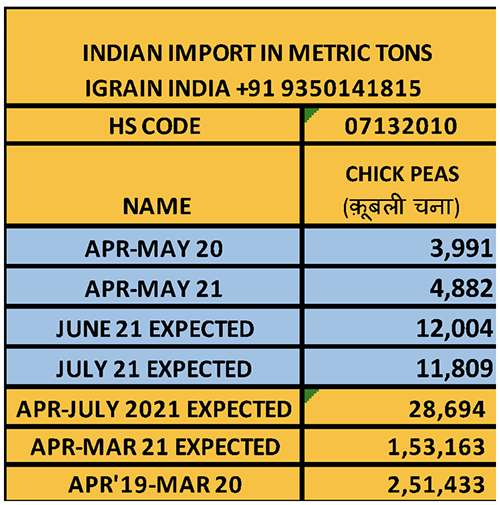
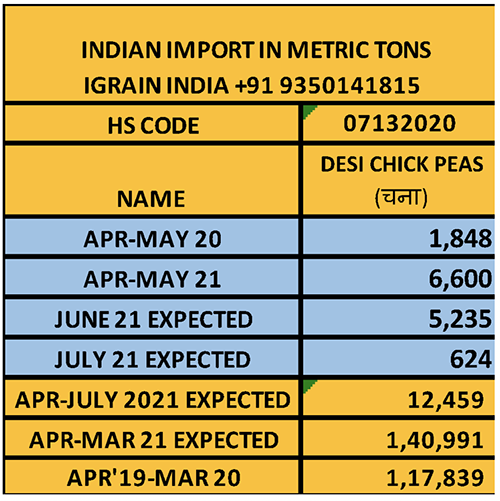
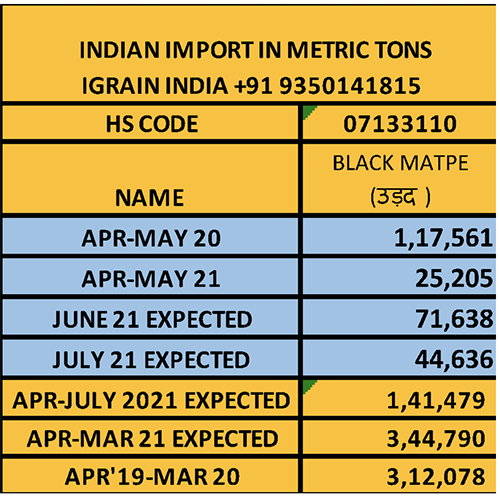
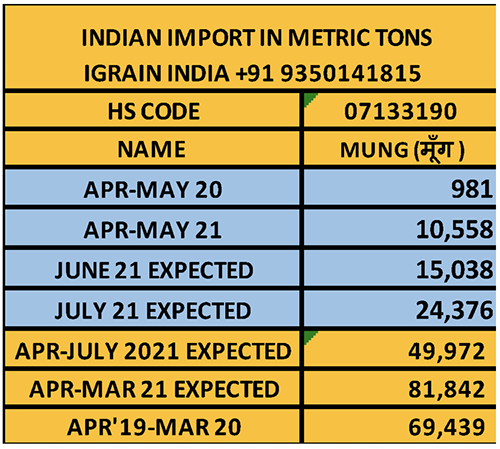


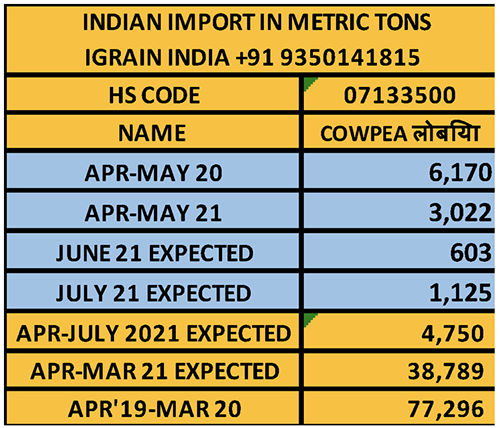

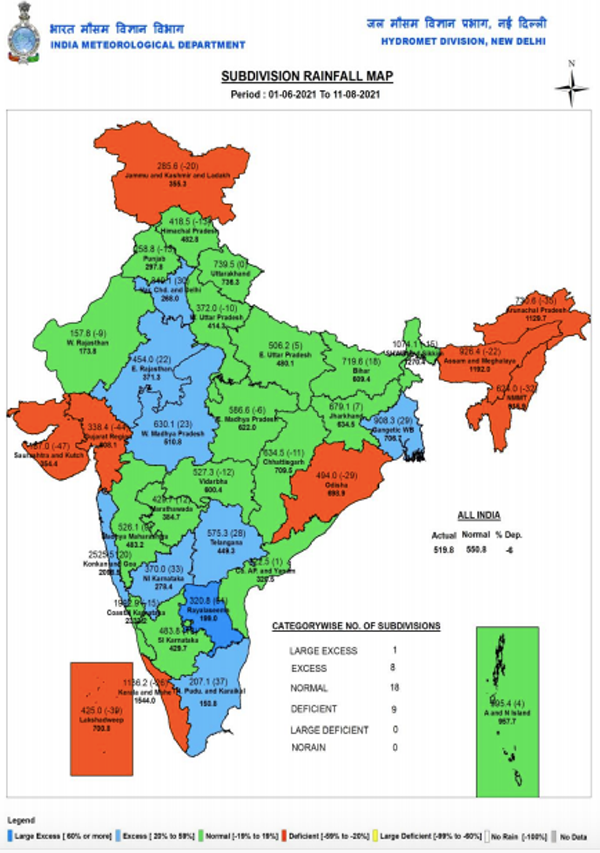
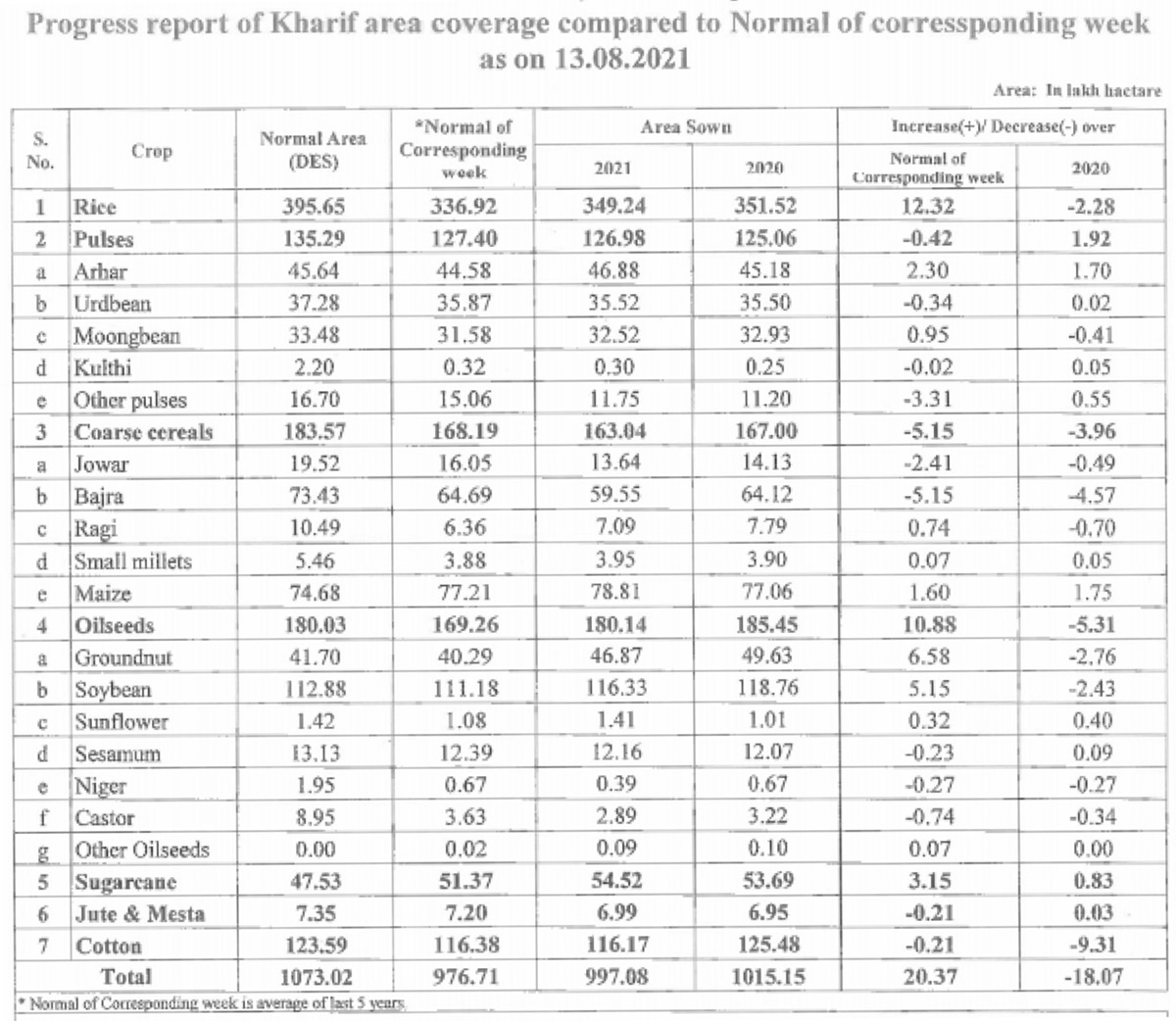
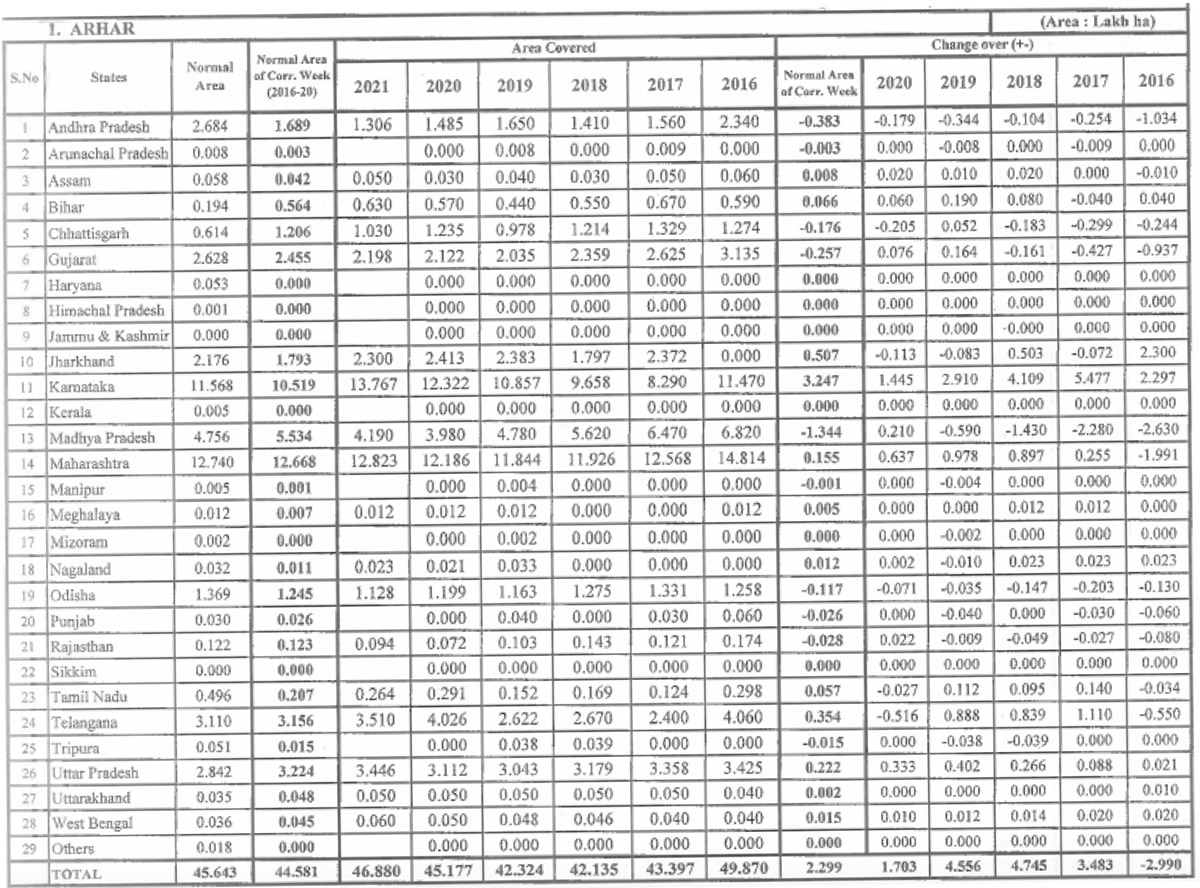
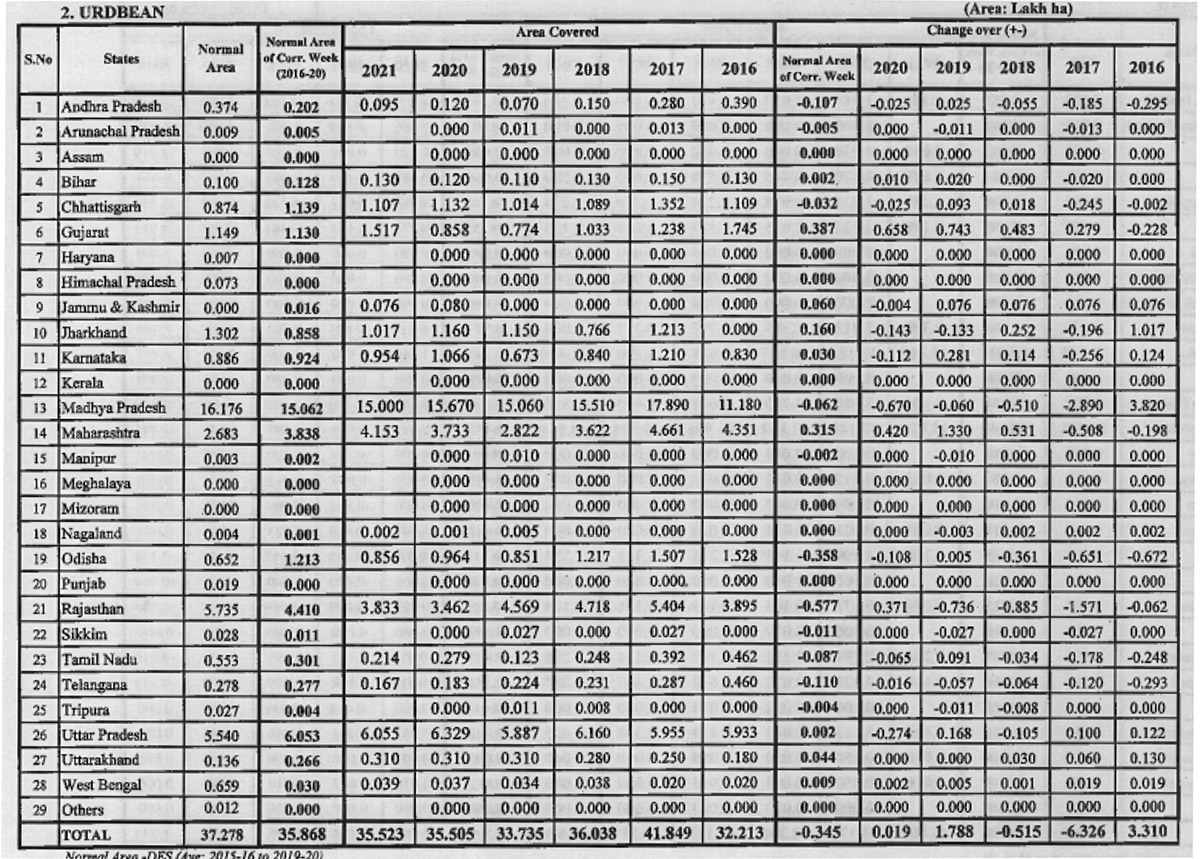
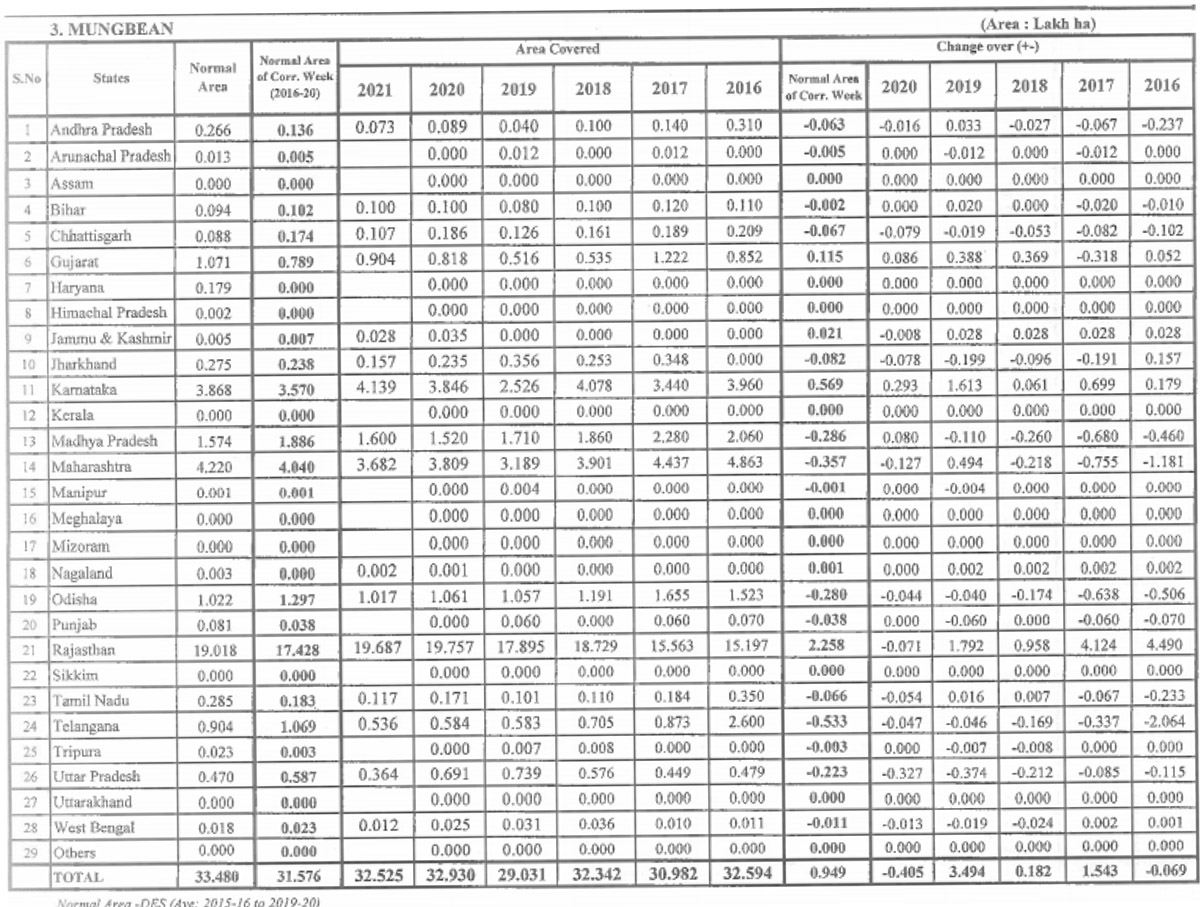
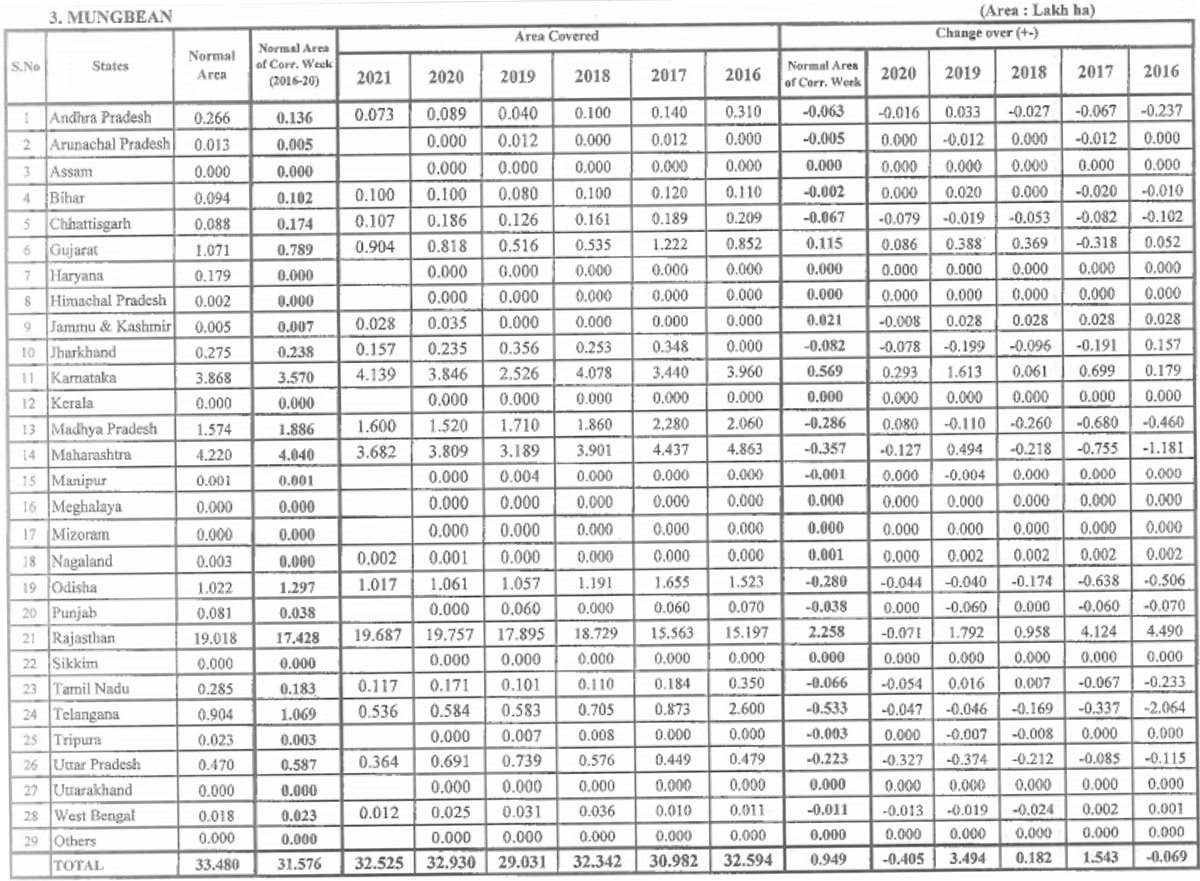
Abbreviations
Tuar/ Arhar: Pigeon Peas PP
Mung: Green Mung
Urad: Black Matpe
Chana: Gram, Desi Chickpea
Matar: Pea
Masur: Lentil
Mandi: Market yard
Bhav: Prices
Dal/Daal: Processed Pulses (Directly for human consumption)
Rs: Indian Rupees (1$=Rs 74.28)
Kharif: Crops sown at the beginning of monsoon season
Rabi: Crops sown at the beginning of winter/end of monsoon season
Rahul Chauhan
Director, IGrain India
igrainind@gmail.com
+91 9350141815
Twitter igrain_india

India / Rahul Chauhan / IGrain / Maharashtra / Karnataka / Rajasthan / Madhya Pradesh / Mung dal / Mumbai
Disclaimer: The opinions or views expressed in this publication are those of the authors or quoted persons. They do not purport to reflect the opinions or views of the Global Pulse Confederation or its members.